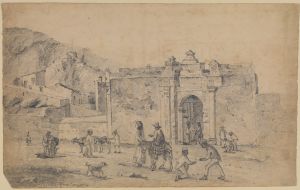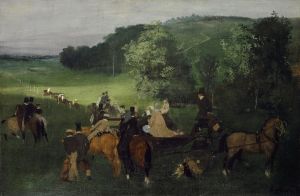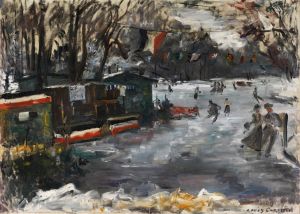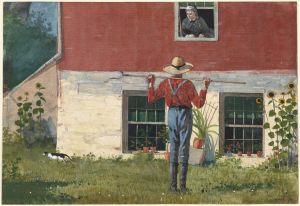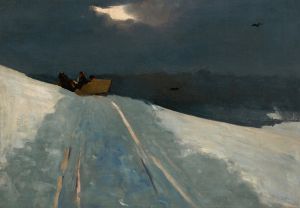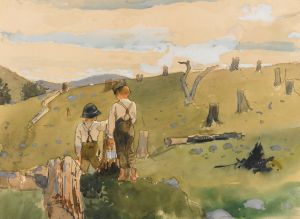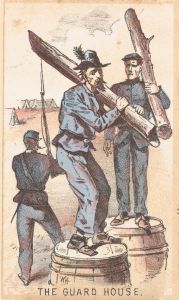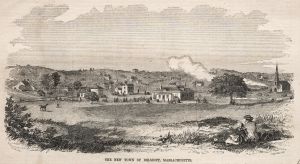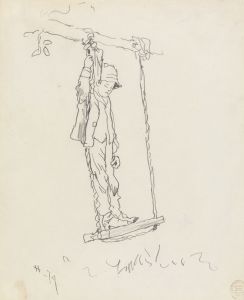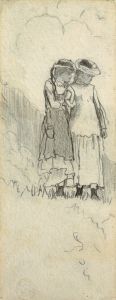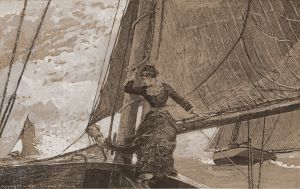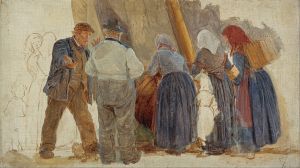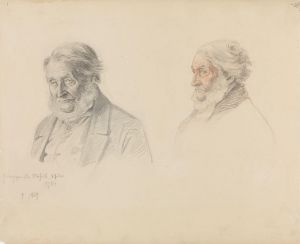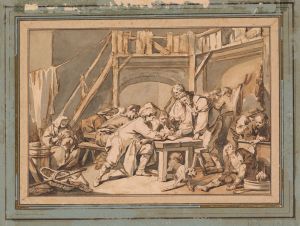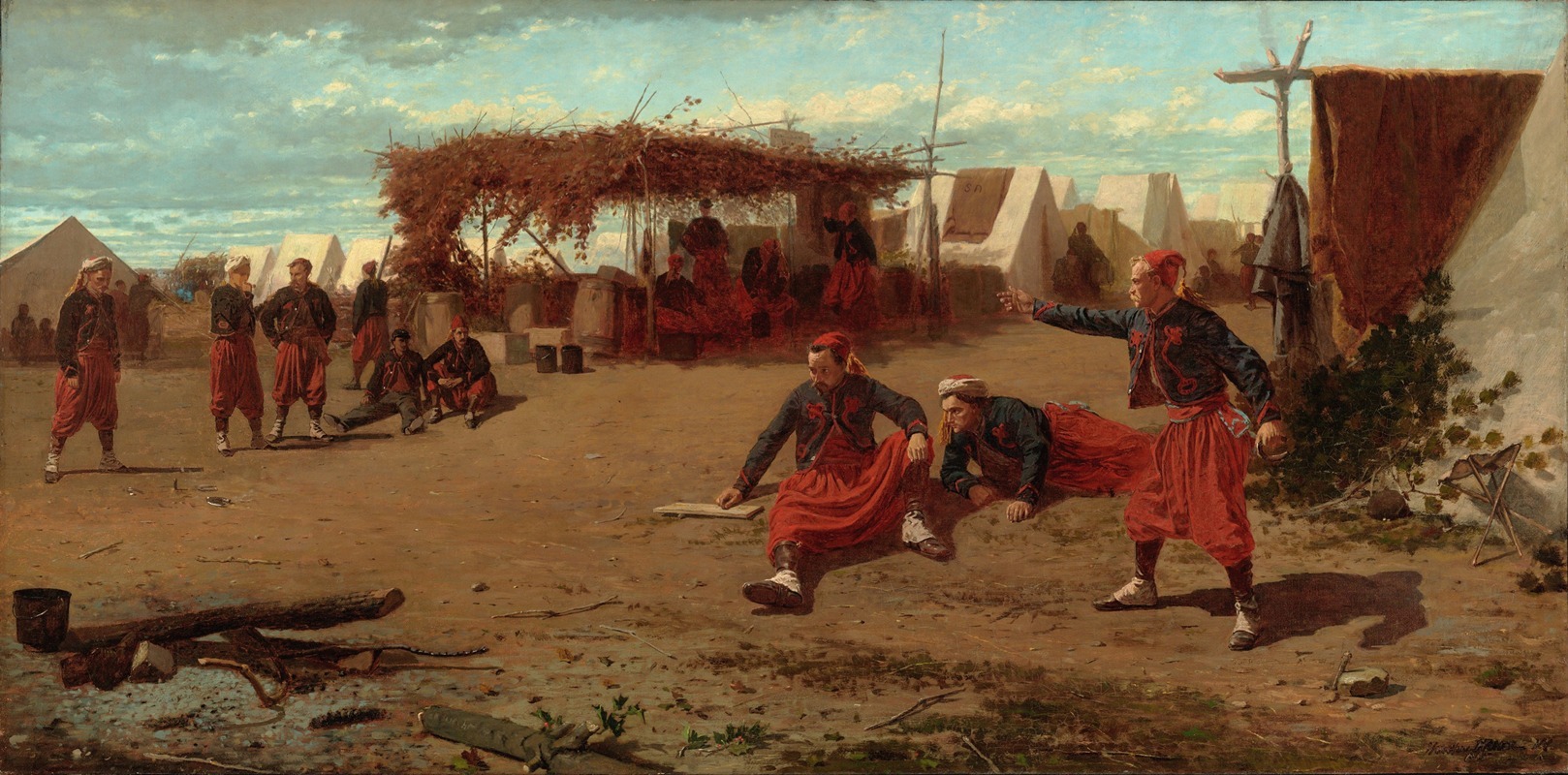
Pitching Quoits
A hand-painted replica of Winslow Homer’s masterpiece Pitching Quoits, meticulously crafted by professional artists to capture the true essence of the original. Each piece is created with museum-quality canvas and rare mineral pigments, carefully painted by experienced artists with delicate brushstrokes and rich, layered colors to perfectly recreate the texture of the original artwork. Unlike machine-printed reproductions, this hand-painted version brings the painting to life, infused with the artist’s emotions and skill in every stroke. Whether for personal collection or home decoration, it instantly elevates the artistic atmosphere of any space.
"Pitching Quoits" is a watercolor painting created by the American artist Winslow Homer in 1865. Homer, known for his significant contributions to American art, particularly in the genres of landscape and genre painting, produced this work during the post-Civil War period. The painting depicts a group of Union soldiers engaging in a game of quoits, a traditional outdoor activity similar to horseshoes, where participants throw rings at a peg or stake.
This artwork is notable for its depiction of leisure and camaraderie among soldiers, offering a glimpse into the everyday lives of those who served during the Civil War. The scene is set outdoors, with the soldiers dressed in their military uniforms, suggesting that the game takes place during a moment of respite from their duties. The relaxed posture and expressions of the figures convey a sense of normalcy and humanity amidst the backdrop of war.
Homer's use of watercolor in "Pitching Quoits" demonstrates his skill in capturing light, texture, and atmosphere. The loose, fluid brushstrokes and muted color palette contribute to the informal and spontaneous feel of the scene. This work reflects Homer's early interest in documenting contemporary life and his ability to find beauty and significance in ordinary moments.
"Pitching Quoits" is part of a series of works by Homer that focus on the lives of soldiers during and after the Civil War. These paintings and illustrations often highlight themes of resilience, community, and the transition from war to peace. As a visual record of this period in American history, the painting holds both artistic and historical significance.
The painting is currently housed in the collection of the Yale University Art Gallery in New Haven, Connecticut. It remains an important example of Winslow Homer's early work and his contribution to the development of American watercolor painting.





